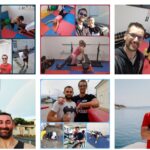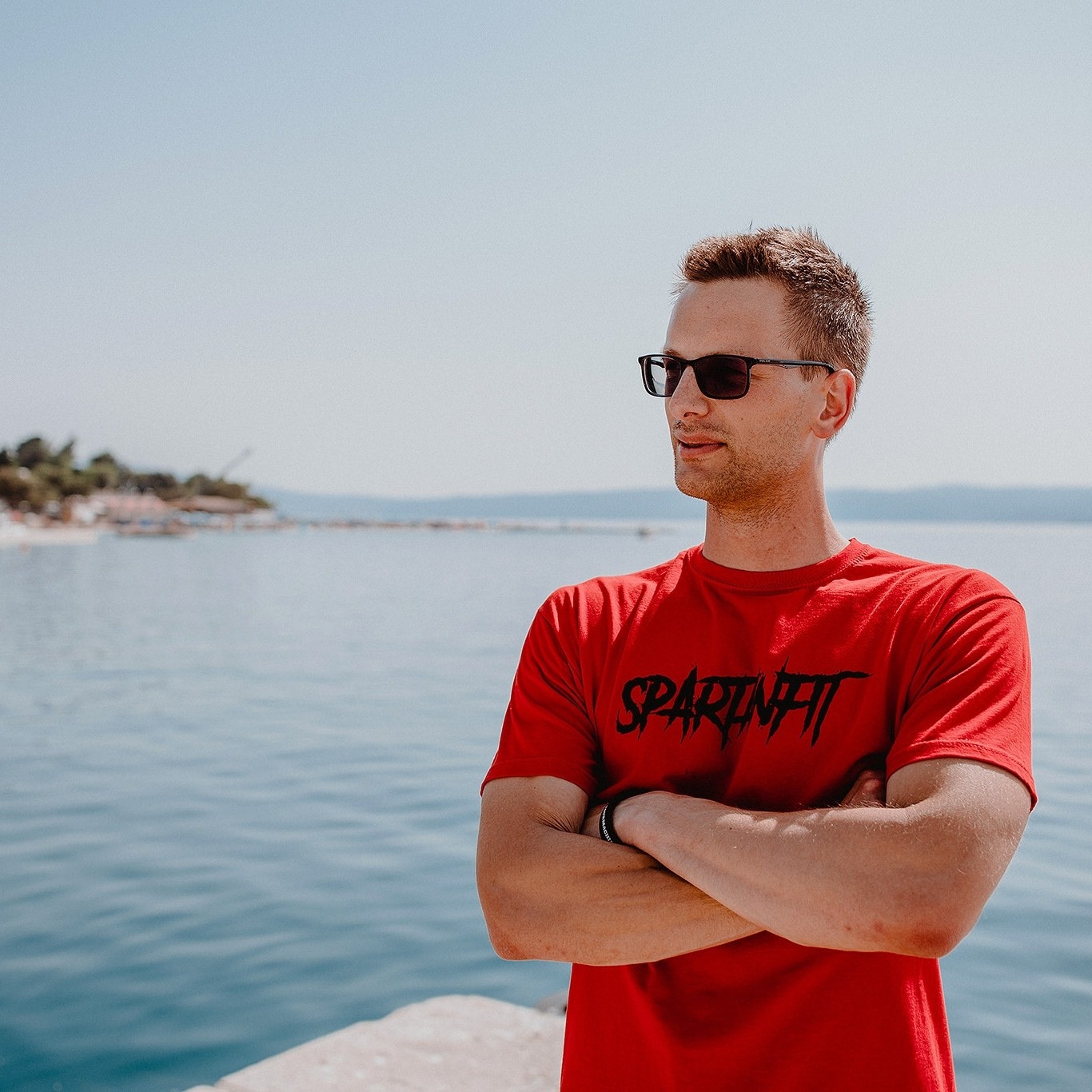It’s sometimes challenging to convey the experienced emotions after an event or accomplishment of this nature, but I’ll try. I swam my first marathon eight years ago (can’t believe it’s been that long already, but oh well). A year later, in 2016, I improved my time by two minutes. After that, there was a year-long break due to a hip injury, then a year when we boarded the ship, but due to bad weather, only a group of professionals were allowed to swim at their own risk. Also, last year had shortened registrations due to COVID, and throughout that period, my genuine desire somehow waned.
So what changed this year? Well, if I had to choose one word to describe my not-mentioned-to-anyone registration, it would be: challenge. The past year has been quite turbulent in terms of my physical condition, and without going through all the details, let’s just recall my severe back injury (L5S1 disc herniation) that kept me away from “real” training for a full six months period. Things are currently sorted out, I feel good, going through summer maintenance after regaining strength and losing four kilos, and for the fall, I plan to upgrade the entire story. Unfortunately, swimming has been mostly neglected for the last two years. As I don’t like to say I don’t have time, I’ll say it’s not that high on my priority list anymore. This year’s registration brought along some nervousness and positive tension because, despite a steady overall fitness level, swimming 3.5km requires a specific kind of preparation, which was basically non-existent. The swim was anything but simple, as evidenced, unfortunately, by a tragic incident. The president of the swimming association spoke up about it, and I sincerely hope our Tourist Board will reconsider better preparation for the marathon itself and return the event to the morning hours, which was not the case only the last two years. It’s clear that weather conditions cannot be controlled, but in principle, there’s a much higher chance of calm seas in the morning, and people are generally more rested and fresh. I’m not the one to come up with excuses, but it wasn’t easy for me to wait for the race to start at 6 p.m. after only 5 hours of sleep and an eight-hour shift. I know many share this sentiment. The sea conditions were anything but ideal, both in terms of waves and water ingestion, as commented on by much stronger “players,” and this was also reflected in the segment of losing course when I was carried to the left in open sea. I probably lost a few minutes returning to the course. I can say I’m satisfied because I only stopped twice during the race—once because my mask slipped, and my left eye started filling with water, and the second time to see where I was. I felt a slight tightening in my right calf and left shoulder, and I’ll admit that twice in the middle of the open sea, when I couldn’t see anyone around me and thought I was left behind, the thought crossed my mind, “this makes no sense.” But. Feats like these are created for several reasons, one of the main ones being pushing one’s own limits. Of course, it’s essential to be responsible in that context and not overdo it.
I genuinely believe that people are capable of much more than they think. Our possibilities are not unlimited, but sometimes we don’t give ourselves the right to try something purely because it seems unfeasible or impossible, especially if that endeavor takes us out of our comfort zone. This is precisely what this race was for me. The person I was competing with weren’t other swimmers, mostly professionals going for record times or Cro Cup points, and trained recreational swimmers. It was me against my mind. The mental-physical component and mutual influence on each other are highly emphasized during such efforts, and what always helps is that strong belief in yourself and your capabilities. If you jump into the sea in Šilo thinking there’s no chance you can swim that distance, the psycho-physical fatigue will come faster, and overcoming the obstacles you’ll inevitably encounter along the way will be harder. Ultimately, if you believe you can’t, what’s the point of starting at all? On the other hand, if you believe you can and don’t give up when it gets tough, your chances of success increase proportionally. My goal was to complete the entire race. The desire was to complete it within the specified competitive time of an hour and a half. I managed to achieve both, and I am extremely satisfied with that. I entered the finish line “sprinting,” which has always been an interesting phenomenon to me among long-distance runners, swimmers, cyclists, and the like—to summon the strength for such a thing after an hour and a half of significant effort. The emotional part came to the fore when I asked the person next to me how much time had passed and realized my wish had been fulfilled. 1:27:41 for lots of happiness and pride and couple of tears in my eyes.
Original release date: August 17, 2023.






